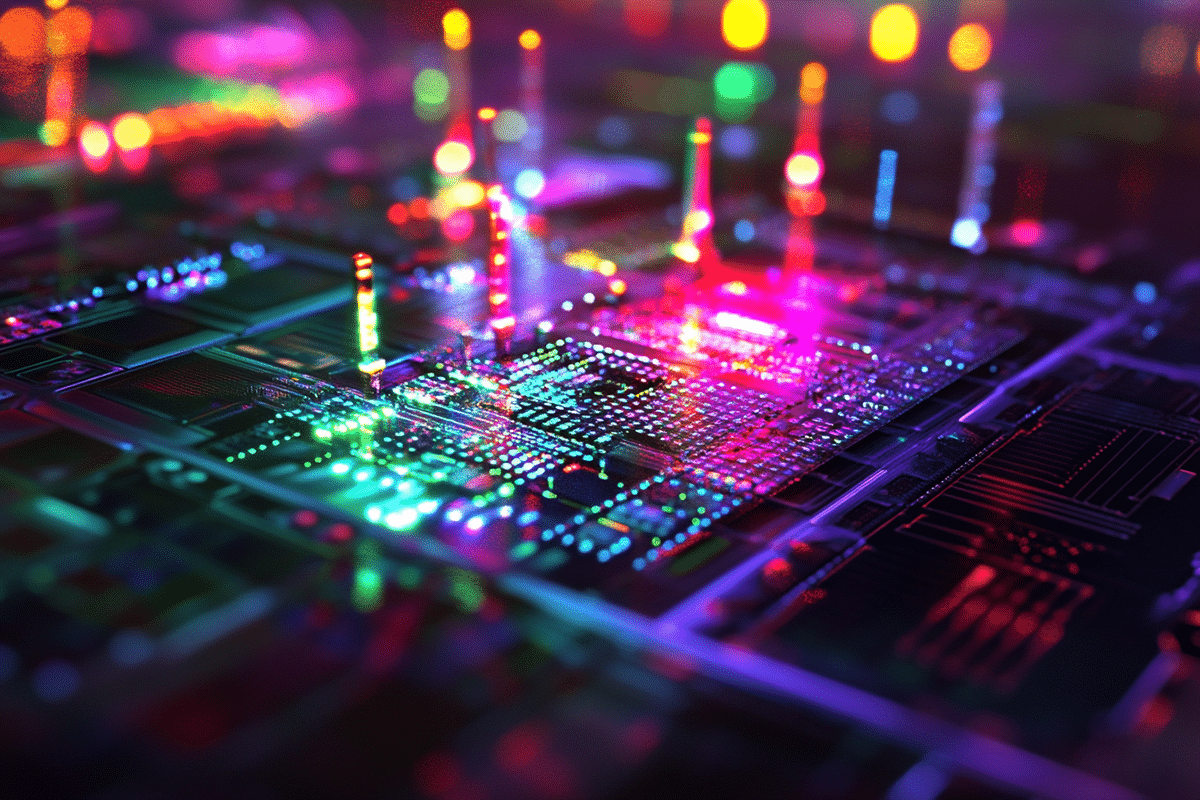A breakthrough in luminescent nanocrystal technology could revolutionize computing by enabling faster, more energy-efficient data processing. These nanocrystals, which rapidly switch between glowing and darkness, represent a significant advancement in the ongoing quest to lower energy consumption in information technology.
As global energy demand continues to rise, particularly from artificial intelligence, researchers are exploring ways to make calculations more energy-efficient. The introduction of these optically bistable nanocrystals marks a promising step forward, offering the potential to reduce energy use in processing-intensive applications.
How the Technology Works
The nanocrystals operate by switching between light and dark states, representing the binary ones and zeros crucial to information storage. Unlike traditional luminescent materials that emit light only when excited by a laser, these crystals maintain their state once triggered, reducing the need for continuous stimulation. This property stems from their optical bistability, allowing them to remain in a light or dark state until conditions change.
The crystals require a higher laser power to activate the light state, but maintaining that state demands significantly less power. This mechanism, likened to the effort needed to start and sustain a moving bicycle, makes the crystals particularly energy-efficient. Additionally, their ability to switch states abruptly enhances their potential for rapid data processing.
Applications in Photonics
Photonics, which replaces electrons with photons in computing, has long been a research focus due to its promise of faster data transfer speeds. These nanocrystals may provide a critical component for photonics-based systems, offering faster and more efficient data processing. Beyond computing, their applications extend to telecommunications, medical imaging, and environmental sensing.
The integration of photonic materials with optical bistability could significantly improve machine learning algorithms and data analysis. Such advancements are vital as global computational demand surges, particularly in energy-intensive industries like AI.
Challenges and Concerns
Despite their potential, several challenges must be addressed before these nanocrystals can be widely adopted. The crystals are composed of KPb₂Cl₅, a material containing lead. While the lead poses minimal risks in operational systems, it raises concerns about the environmental impact of disposal.
Additionally, the crystals require doping with neodymium, a rare earth metal. Neodymium’s extraction and processing are largely controlled by a few geopolitical players, creating supply chain vulnerabilities. These factors could complicate the scalability and adoption of the technology.
Another significant limitation is that the current experiments were conducted at temperatures nearing -200°C. Such extreme conditions are impractical for everyday applications, necessitating further research to make the technology viable at room temperature.
Future Directions
While these challenges highlight the hurdles to practical implementation, the discovery demonstrates the potential of optical bistability under conditions more favorable than previously achieved. Researchers are optimistic that future advancements will address scalability, material concerns, and environmental impacts.
The development of nanocrystals capable of maintaining light and dark states without constant power input represents a significant leap forward. As global energy demand continues to climb, particularly in the context of renewable energy expansion and computational growth, such innovations offer hope for a more sustainable technological future.
This discovery underscores the importance of investing in alternative computing solutions that prioritize efficiency without compromising performance, marking a promising chapter in the evolution of energy-efficient technologies.



